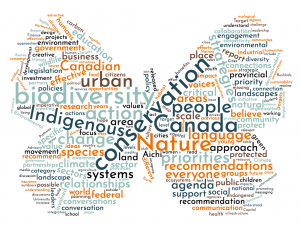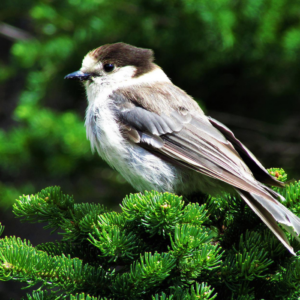Women for Nature: Concrete Solutions for Biodiversity Conservation

Jaime Clifton-Ross
This blog post was written by Jaime Clifton and provides the summary of the keys points of discussion during the latest Women for Nature E-Dialogue.
Changing the Conversation and Nature Canada’s Women for Nature just led the final e-Dialogue from the Biodiversity Conversations: How important are the common loon and polar bear to Canadians series. Over the last 8 months, over 20 female researchers, practitioners, and civil society leaders explored local to global actions and strategies for biodiversity conservation.
Since the series began in September 2017, several critical reports have been published. WWF’s 2017 Living Planet Report for Canada in 2017 disclosed that 50% of species in our country are in decline. The newly published 2018 State of the World’s Birds global study states that 1 in 8 birds are now facing the threat of extinction. Furthermore, the world’s greatest forests could lose more than half of all wildlife by the end of the century, according to another WWF study. Given these alarming trends, the protection of biodiversity has never been more imperative.
While there were many great recommendations and ideas, here is a snapshot:
- Indigenous Collaboration and Leadership: Prioritize collaboration and authentic partnerships between Indigenous systems and western systems at all levels. The newly released ICE (Indigenous Circle of Experts) report speaks to re-inventing institutions to reflect a systems-based approach.
 We are a part of nature, not apart from nature: Our governance systems are profoundly linear and fragmented, and reflect the dominant belief that nature and culture are separate. Seeing ourselves as a part of nature, not apart from nature, even in our cities, will help (re)connect Canadians to biodiversity and is a critical communications strategy. Also, reposition conservation as an urban initiative and challenge to speak to the growing number of urban dwellers in Canada.
We are a part of nature, not apart from nature: Our governance systems are profoundly linear and fragmented, and reflect the dominant belief that nature and culture are separate. Seeing ourselves as a part of nature, not apart from nature, even in our cities, will help (re)connect Canadians to biodiversity and is a critical communications strategy. Also, reposition conservation as an urban initiative and challenge to speak to the growing number of urban dwellers in Canada.- Investment and Finance: Greater education about the Aichi Targets for the Canadian public, but more specifically, business and investment leaders should be invited to contribute to enabling the financing and financing tools that will be necessary for Canada to reach its goals.
- Language and Messaging: Given the overwhelming and negative messaging on biodiversity loss, communicate issues clearly and present them in a positive and personal way. Also, showcase successful efforts and innovations to help spur change at the personal, community, provincial, national and international levels.
- Mapping: Create/expand an interactive and ongoing map of the critical habitat of endangered and near to endangered species and make these priority areas, as a learning and awareness tool.
Now that the series has come to a close, Women for Nature co-chair, Professor Ann Dale will be drafting an action agenda for Canadian decision-makers summarizing the concrete recommendations for biodiversity conservation in Canada.



